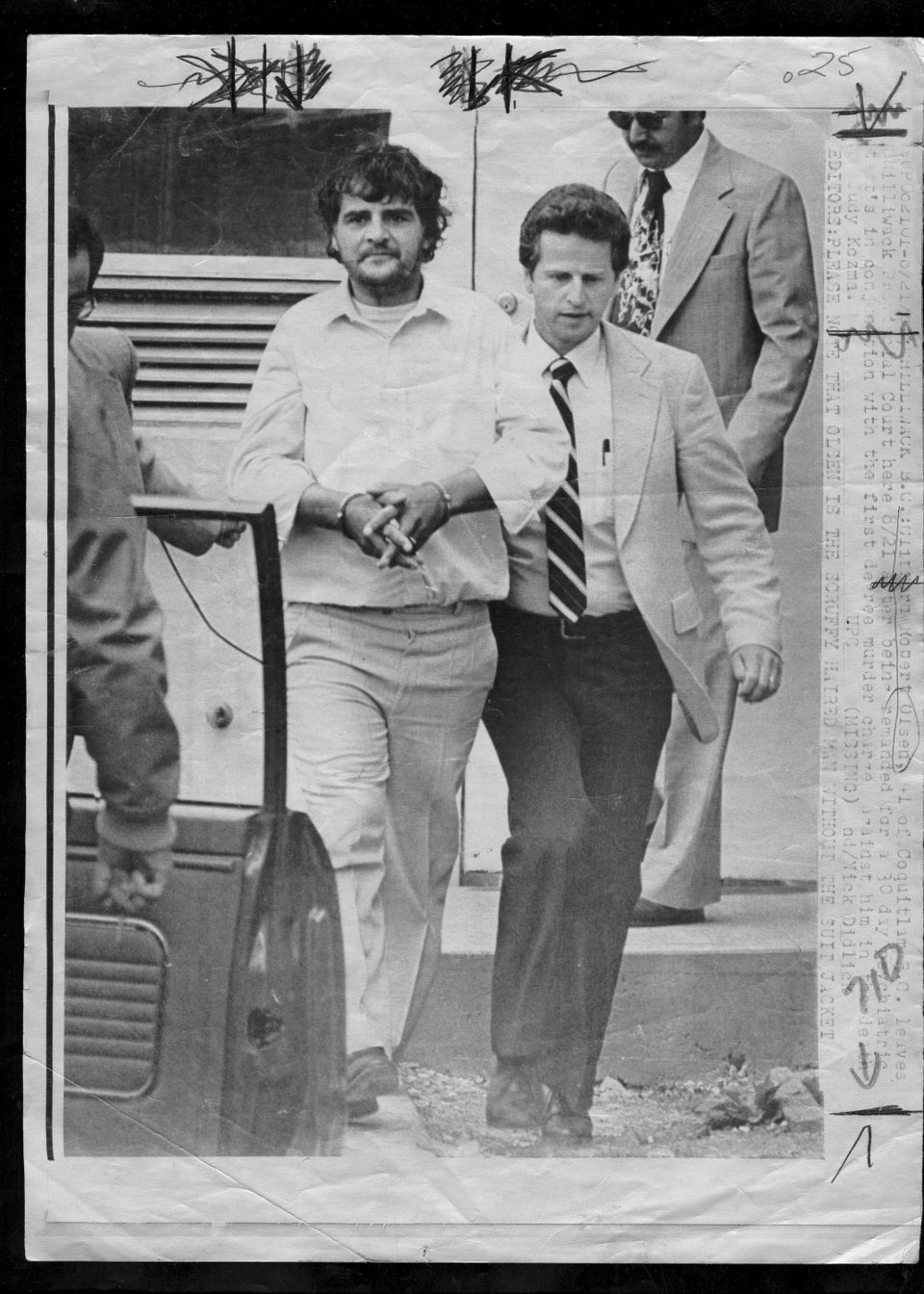
This is the first of an three-part series from the newly published Predator: The Life and Crimes of Serial Killer Clifford Olson, by award-winning Canadian journalist Peter Worthington. Olson died in prison a year ago, on September 30, 2011.The details of Olson's murders have never made public -- until now. After extensive interviews conducted over many years with Olson from a prison cell, and with exclusive access to sealed court records, Worthington has produced the first-ever account of Olson's heinous crimes -- and also of his childhood and life in and outside of prison. [A percentage of the proceeds from the book will go to Childfind.] Today Worthington explains how he got to know Olson, and the peculiar relationship that unfolded.
In the summer of 1989, broadcaster Arlene Bynon aired a documentary on Toronto radio station CHFI about the execution of serial killer Ted Bundy in the U.S. After the broadcast, she received a phone call from Canada's most infamous serial killer at the time -- Clifford Olson, who was serving 11 concurrent life sentences in Kingston Penitentiary for murdering 11 young people in 1980-81 in the lower mainland of British Columbia. Despite a government ban on him communicating with anyone in the media, Olson seemed to have easy access to a telephone.
Mostly what anyone knew about Olson (including me) was that he had been paid $100,000 by the Royal Canadian Mounted Police to lead them to the sites of 11 murders he said he had committed -- $10,000 per body, with one thrown in (as he said) as a "freebie." Until he confessed, the RCMP (and his lawyer, Bob Shantz), had no idea he'd murdered people. They knew him as a career criminal, but as a non-violent thief, burglar and-con man.
At his 1982 trial, Olson suddenly and unexpectedly pleaded guilty. As a consequence, there was no trial -- just his sentencing. He didn't testify in court, was never cross-examined, never interviewed, never gave a reason why or how he picked his victims. To this day, now that he's dead from cancer, Olson's motives and methods remain largely a mystery, open to conjecture.
At the time I was broadcasting daily comments on Arlene's CHFI talk show, and became party to frequent phone conversations when Olson phoned -- collect, of course. He soon began phoning me. Thus began extraordinary access to the mind, thinking and unexplored background of a serial killer.
At Olson's behest, many of his phone conversations were recorded -- with an eye to some day being broadcast. This was his narcissistic obsession. Often he would phone several times a day, although technically he was allowed only two "socialization" calls a month. When asked how this was possible in light of the Solicitor-General's ban on him contacting the media, Olson merely laughed. "We're getting away with murder with these calls, aren't we?" he chortled one day. "We're making jackasses out of these guys. They'll go crazy when they find out . . ."
In 1991, a Supreme Court judge in response to Olson's seemingly endless complaints and legal suits, admonished him to "stop whining" and noted that contrary to regulations, records showed he had made over 90 phone calls to lawyers in Toronto. Ironically, those "lawyers" were mostly Bynon and me.
Like many journalists, I routinely applied to visit Olson in Kingston pen, about two hours east of Toronto. Requests were usually turned down on grounds that Olson had nothing of significance to contribute, and that publicity merely fed his ego.
Then one day in early 1991, an excited Olson phoned to say that a visit with him in prison had been approved. During that summer I regularly visited Olson (average once a week), armed with a tape recorder, and was subjected to his memories and views on practically everything while he consumed a succession of Coca-Colas from a soft drink dispenser. In face-to-face meetings, he was banal, obsequious, unthreatening.
Arlene and I interested a U.S. publisher in a book, but my manuscript disappointed the publisher who wanted a Ted Bundy-like chase, with police gradually closing in on the killer.
That wasn't possible with Olson. Police had no idea there was a serial killer loose in B.C.'s Fraser Valley in 1981-82 until Olson told them. To me, that made Olson's story more unusual -- more frightening, in that an unknown and unidentifiable murderer was rampant.
Over the intervening years Olson kept phoning me. When a handcuff key was found hidden in his rectum at Kingston and his escape plans were thwarted, he was transferred to the federal penitentiary at Prince Albert, Saskatchewan. His phone calls diminished. Then when he was transferred to Ste-Anne-Des-Plaines prison in Quebec, the phone calls increased -- sometimes to four or five a day. No longer were they collect calls -- he, or the Correctional Services of Canada - apparently paid for them.
Over the years public interest in profiling serial killers increased, and TV programs like "CSI" and "Criminal Minds" made people realize the importance of studying and investigating the thinking of heinous murderers, to find a common thread to their behaviour -- which we now know exists.
But Olson was convicted without a trial--he pleaded guilty. Thus there was no public access to the 11 murders, detailed in 50-page documents he wrote describing how he killed and raped each victim. He wanted the writing embargoed until his one-year-old son reached to age of 21 "so he would better understand his father."
As time went on, Bob Shantz asked me to review the manuscript which, nearly 30 years after Olson's crimes, tells the still-unknown story of a serial killer who haunted Canada's conscience. Olson died from colon cancer Sept. 30, 2011.
